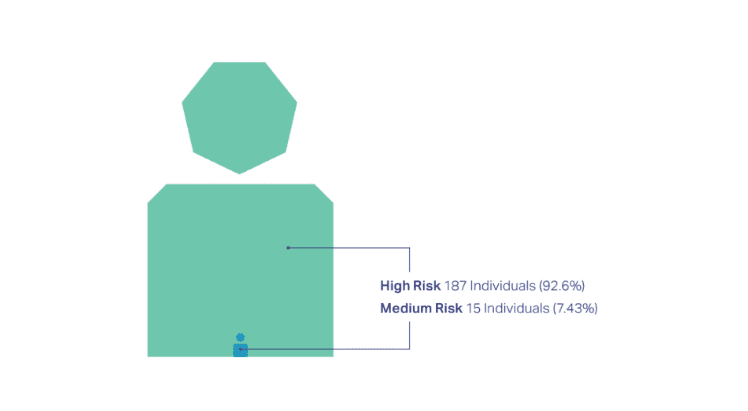What is the Risk Assessment Report?
The unique Order for Lifelong Restriction (OLR) sentence is reserved for those who are assessed as presenting a likelihood of seriously endangering the lives, physical or psychological well-being, of members of the public. To impose an OLR, first a Risk Assessment Order (RAO) must be instructed – in our previous blog we looked at why a judge might make an RAO. Here, we look at the next stage: the Risk Assessment Report (RAR).
What’s involved in a Risk Assessment Report?
The assessment process involves several stages – it begins with the gathering of information. A RAR will be based upon credible information that’s been gathered from a range of sources, this can be things like: interviews with the individual subject to the report; opinions and observations from family, friends, victims, witnesses and relevant professionals; past and present paperwork – things like social work records, GP and hospital records, education and/or employment records; relevant statements and a report of the evidence provided by the Crown Office and Procurator Fiscal (COPFS), and any information relating to previous convictions or allegations and previous risk assessments. The assessment will also involve the application of risk tools – the Assessor will apply the most appropriate tool, which depends on the circumstances and the nature of the offence as well as the characteristics of the individual it is being applied to.
Every effort is made by the Assessor to verify the information, and they must document any limitations and be careful to not rely on any one source or type of information. Importantly, it’s essential that all this information is then analysed by the Assessor, an approach called formulation.
What’s involved in a Risk Assessment Report?
A formulation-based approach underpins the way in which an Assessor conducts their RAR. It involves the Assessor developing a comprehensive picture of the individual – the whole story. A crucial aspect of this involves the Assessor identifying the factors in an individual’s life that are relevant to their offending behaviour – and if they increase or decrease the likelihood of offending behaviour. The Assessor will convey their final thoughts in a narrative formulation by analysing all the information gathered, using psychological theory, to give a clear explanation of the individual’s offending behaviour and the risk that it poses to others. This analysis provides the foundation for understanding the pattern and nature of an individual’s offending behaviour, estimating the likelihood and seriousness of future harm, and identifying the likely scenarios in which offending may occur in the future. Our Head of Development, Geoff Tordzro-Taylor, writes about the use of formulation in his blog Never Stop Asking “Why”? –
“We have to distil everything we know about what can lead to offending into a meaningful picture of what has been relevant to this individual, and really importantly, what can be done to change that picture.”
Opinion on Risk
The Assessor must then evaluate their analysis and provide their professional, informed opinion on the level of risk the individual poses to the public. The Assessor can categorise this risk as either ‘high’, ‘medium’ or ‘low’ to support the court in its decision as to whether the OLR is a proportionate and appropriate sentence for the individual convicted. It’s important to note that the Judge will consider the outcome of the RAR, but this outcome alone doesn’t determine if the individual will receive an OLR.
We use these clear definitions so the assessment can be understood by everyone. The RMA provide clear definitions of what is meant by ‘high’, ‘medium’ or ‘low’ in our Standards and Guidelines for Risk Assessment, which the Assessor must “have regard” to. This means they have a duty to consider the guidelines, and very clearly provide any reasoned explanation as to why if any of the guidance has not been followed.
In Chapter eight of our research The Offending Behaviour of Those Sentenced to the Order for Lifelong Restriction, we take a closer look at the offending profile of those with an OLR according to the risk rating. Of the group in the study (just over 200), almost 93% had been given a risk rating of ‘high’ and 7% received a risk rating of ‘medium’. Our research found that individuals in the ‘high’ risk rating group tended to have longer durations of offending and were more likely to have multiple allegations of offending behaviour.

Over the 18 years of the Risk Assessment Order being available to the High Court, the average number of RARs has been around 22 per year. You can see the numbers and outcome of RARs over the years in our data visualisations, by clicking here.
